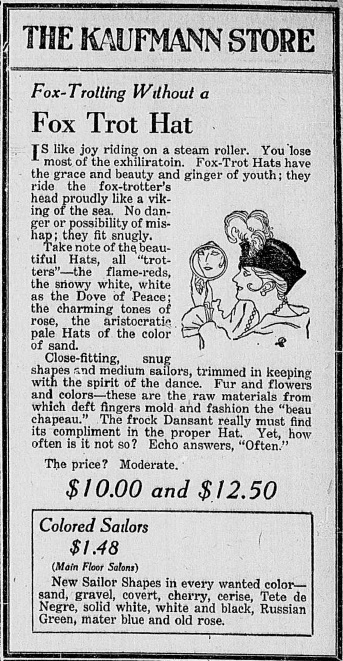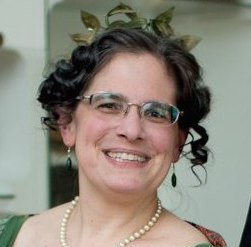
I’ve been looking for something amusing to wind up the centennial year of the foxtrot, and I found it in the November 17, 1914, issue of The Richmond Times-Dispatch: some fashion advice for the foxtrotting ladies in the store advertisement shown at left:
Fox-Trotting Without a Fox Trot Hat
is like joy riding on a steam roller.
How do I follow up a line like that? I can only suggest reading the rest of the ad (click to enlarge) for more delightfully fulsome language.
For historical dancers, this is a reminder that during the 1910s, dancing in a hat at an afternoon thé dansant was perfectly proper, though judging by the advertisement, either not everyone agreed or not everyone succeeded in finding a suitable hat:
(more…)
